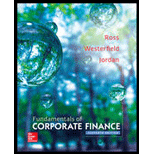
Case synopsis:
Person MS and Person TS are discussing about the prospect of Company SS. The company seems to grow faster. However, the faster growth of the company is difficult to be financed by the company’s internal source. Thus, Person MS and Person TS have decided to go public and discuss about this with the Investment Bank CM.
The underwriter of the Company was Person RH who assisted in the previous offerings of the company. The investment bank assisted many companies for their initial public offering, thus Person MS and Person TS are confident about the investment bank. The underwriter states the process that is taken by the investment bank.
Characters in the case:
- Person MS
- Person TS
- Person RH
- Investment bank CM
- Company SS
Adequate information:
- Person RH states to Person TS and MS that they must give their 3 years audited financial statements if they need to file with the securities exchange commission
- Person MS states that the company has given the financial statements that are audited as a part of the bond covenant
- The company makes a payment of $300,000 to the outside auditor
To determine: The difference in the expenses to the Company SS if it utilize a Dutch auction initial public offering versus the traditional initial public offering. The company must go public through the traditional underwritten offering or through the Dutch auction.
Want to see the full answer?
Check out a sample textbook solution
Chapter 15 Solutions
Fundamentals of Corporate Finance
- 4. A company has $100,000 in assets and $50,000 in liabilities. What is its equity? Need a helpful..???arrow_forward4. A company has a debt-to-equity ratio of 1:2. If debt is $200,000, what is equity?arrow_forward9. If a company's current ratio is 2 and its current liabilities are $50,000, what are its current assets?no chatgpt???arrow_forward
- 5. Calculate the return on equity (ROE) for a company with net income $150,000 and equity $750,000.arrow_forward6. What is the price of a bond with face value $1,000, coupon rate 8%, and market interest rate 10%?arrow_forward9. A company has fixed costs $50,000, variable costs $10/unit, and sells products at $20/unit. What is the break-even point?arrow_forward
- 8. Calculate the weighted average cost of capital (WACC) for a company with 60% equity (cost 12%) and 40% debt (cost 8%). no gpt ..???arrow_forward8. Calculate the weighted average cost of capital (WACC) for a company with 60% equity (cost 12%) and 40% debt (cost 8%). Need a helpful..??arrow_forward3. If a company's net income is $100,000 and it has 10,000 shares outstanding, what is the earnings per share (EPS)? Correctly answer..???arrow_forward
- 10. If a stock's dividend yield is 5% and stock price is $100, what is the annual dividend payment? no gpt..???arrow_forward8. A stock has a beta of 1.2 and the market return is 10%. If the risk-free rate is 2%, what is the expected return? need a ai ..???arrow_forwardA corporation buys on terms of 2/8, net 45 days, it does not take discountes, and it actually pays after 62 days, what is the effective annual percentage cost of its non-free trade credit? Use a 365-day year) keep to the 6th decimal place for accuracyarrow_forward
 EBK CONTEMPORARY FINANCIAL MANAGEMENTFinanceISBN:9781337514835Author:MOYERPublisher:CENGAGE LEARNING - CONSIGNMENTPrinciples of Accounting Volume 1AccountingISBN:9781947172685Author:OpenStaxPublisher:OpenStax College
EBK CONTEMPORARY FINANCIAL MANAGEMENTFinanceISBN:9781337514835Author:MOYERPublisher:CENGAGE LEARNING - CONSIGNMENTPrinciples of Accounting Volume 1AccountingISBN:9781947172685Author:OpenStaxPublisher:OpenStax College Intermediate Financial Management (MindTap Course...FinanceISBN:9781337395083Author:Eugene F. Brigham, Phillip R. DavesPublisher:Cengage Learning
Intermediate Financial Management (MindTap Course...FinanceISBN:9781337395083Author:Eugene F. Brigham, Phillip R. DavesPublisher:Cengage Learning



